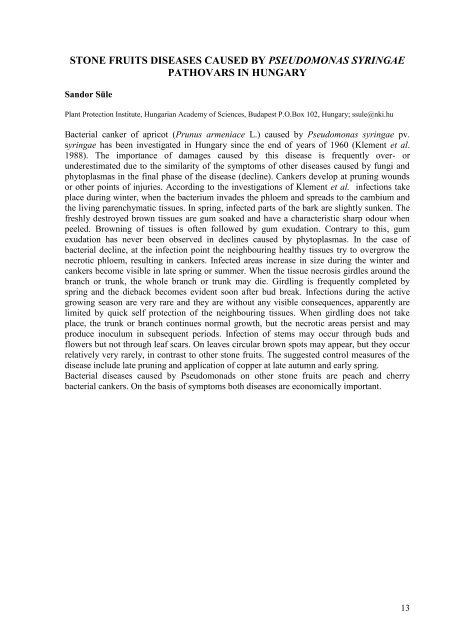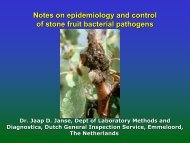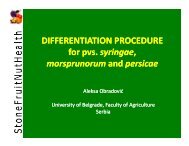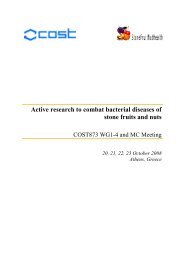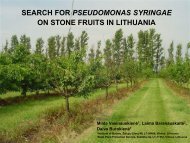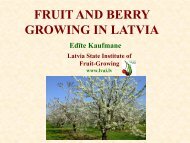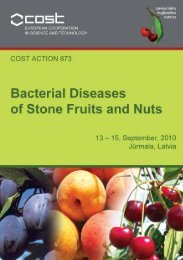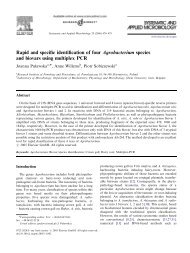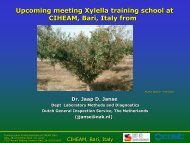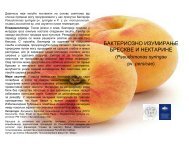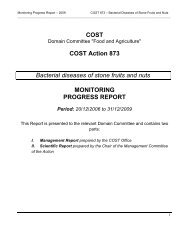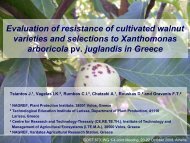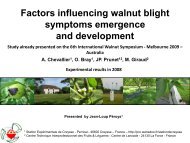Pseudomonas meeting - Cost 873
Pseudomonas meeting - Cost 873
Pseudomonas meeting - Cost 873
- No tags were found...
Create successful ePaper yourself
Turn your PDF publications into a flip-book with our unique Google optimized e-Paper software.
STONE FRUITS DISEASES CAUSED BY PSEUDOMONAS SYRINGAEPATHOVARS IN HUNGARYSandor SülePlant Protection Institute, Hungarian Academy of Sciences, Budapest P.O.Box 102, Hungary; ssule@nki.huBacterial canker of apricot (Prunus armeniace L.) caused by <strong>Pseudomonas</strong> syringae pv.syringae has been investigated in Hungary since the end of years of 1960 (Klement et al.1988). The importance of damages caused by this disease is frequently over- orunderestimated due to the similarity of the symptoms of other diseases caused by fungi andphytoplasmas in the final phase of the disease (decline). Cankers develop at pruning woundsor other points of injuries. According to the investigations of Klement et al. infections takeplace during winter, when the bacterium invades the phloem and spreads to the cambium andthe living parenchymatic tissues. In spring, infected parts of the bark are slightly sunken. Thefreshly destroyed brown tissues are gum soaked and have a characteristic sharp odour whenpeeled. Browning of tissues is often followed by gum exudation. Contrary to this, gumexudation has never been observed in declines caused by phytoplasmas. In the case ofbacterial decline, at the infection point the neighbouring healthy tissues try to overgrow thenecrotic phloem, resulting in cankers. Infected areas increase in size during the winter andcankers become visible in late spring or summer. When the tissue necrosis girdles around thebranch or trunk, the whole branch or trunk may die. Girdling is frequently completed byspring and the dieback becomes evident soon after bud break. Infections during the activegrowing season are very rare and they are without any visible consequences, apparently arelimited by quick self protection of the neighbouring tissues. When girdling does not takeplace, the trunk or branch continues normal growth, but the necrotic areas persist and mayproduce inoculum in subsequent periods. Infection of stems may occur through buds andflowers but not through leaf scars. On leaves circular brown spots may appear, but they occurrelatively very rarely, in contrast to other stone fruits. The suggested control measures of thedisease include late pruning and application of copper at late autumn and early spring.Bacterial diseases caused by Pseudomonads on other stone fruits are peach and cherrybacterial cankers. On the basis of symptoms both diseases are economically important.13


